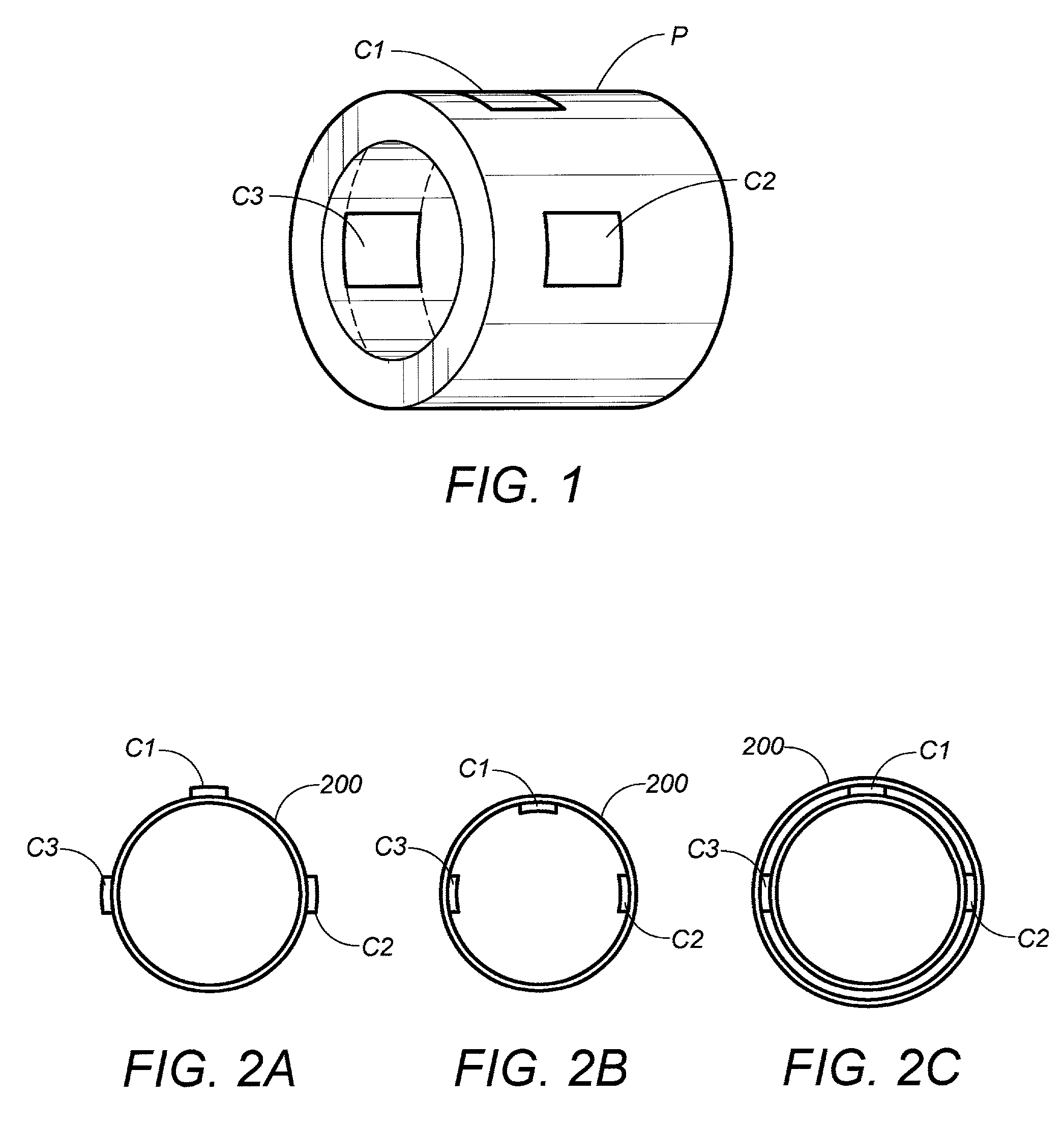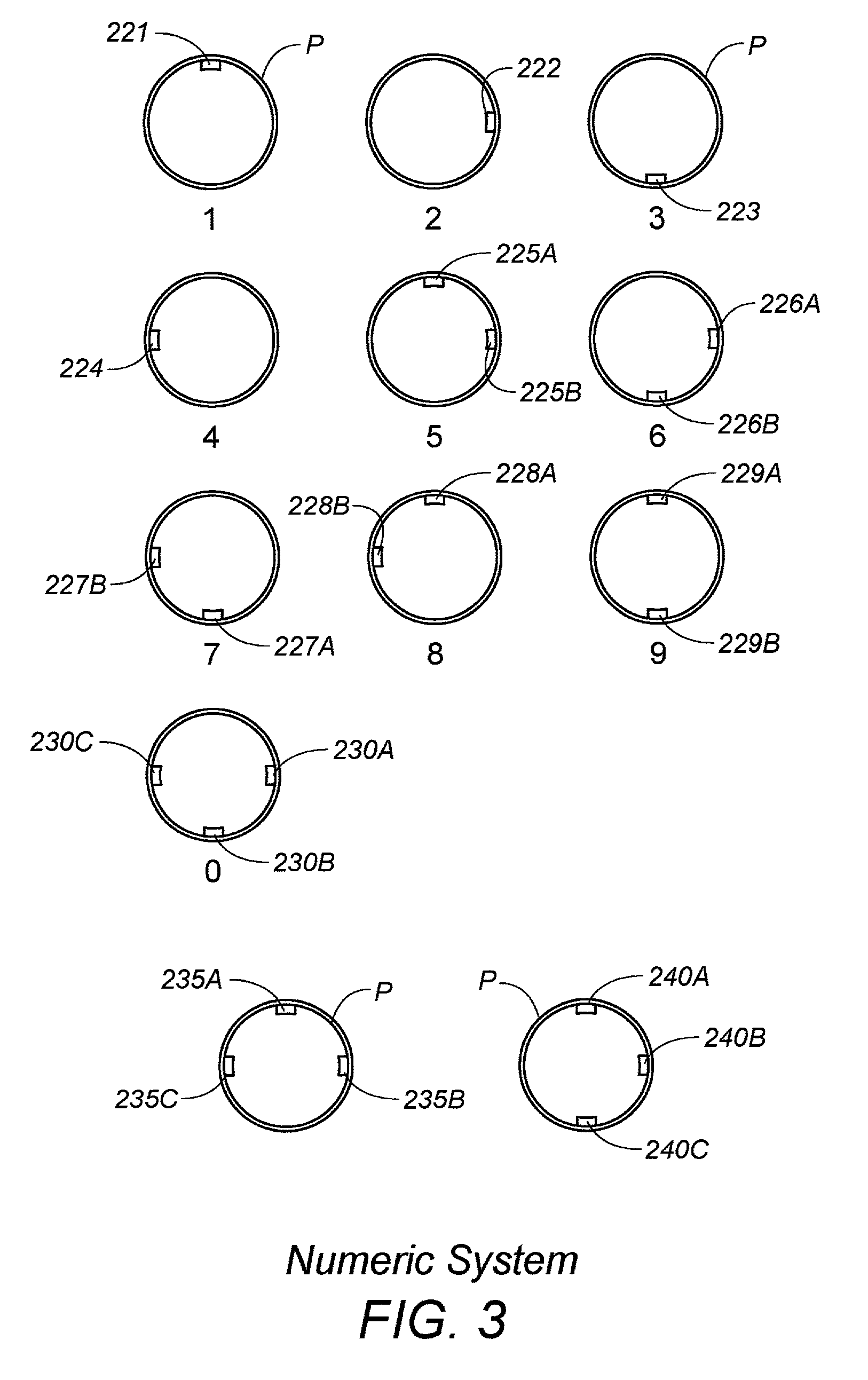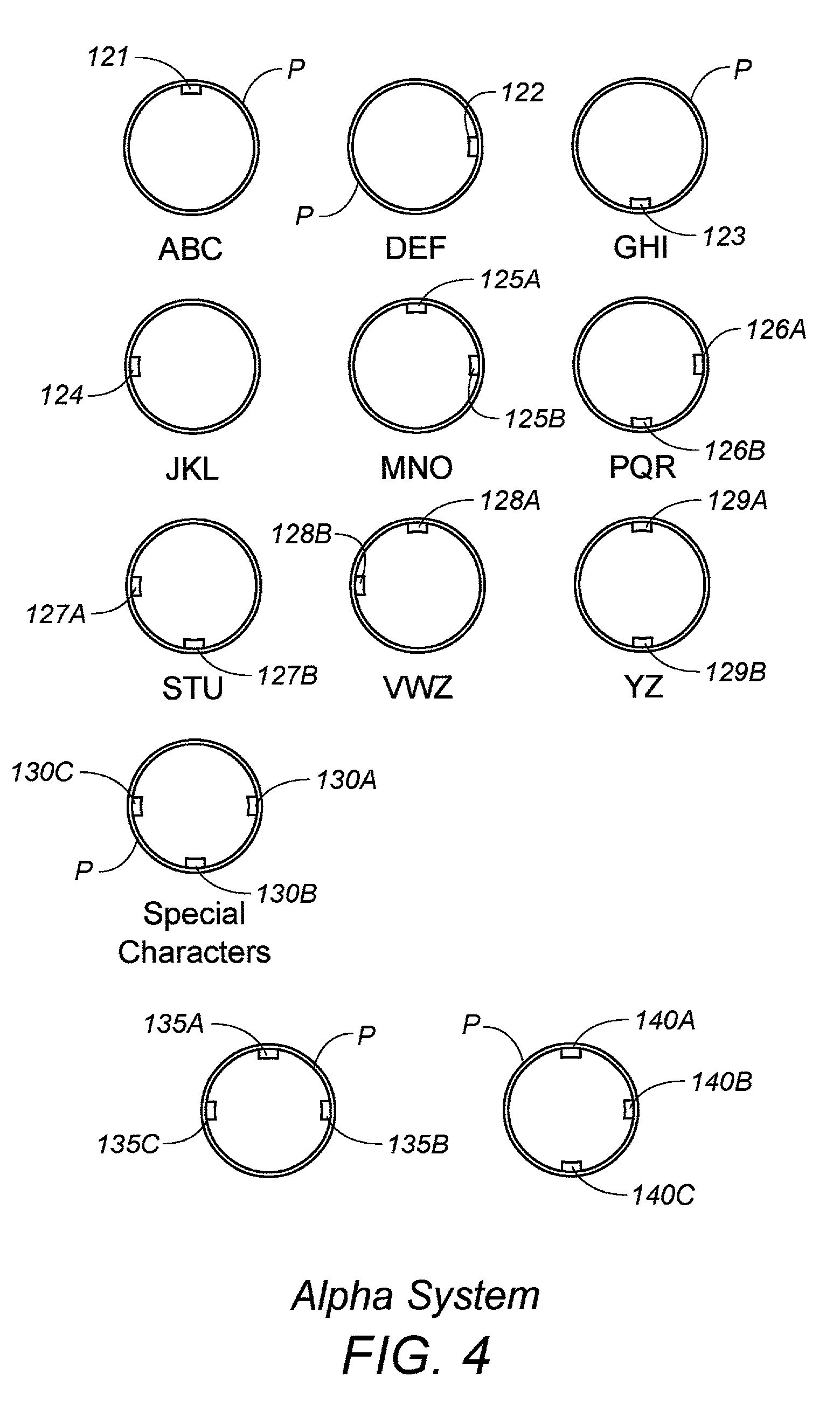Pipeline identification and positioning system
a positioning system and pipeline technology, applied in the direction of pipes, pipe laying and repair, instruments, etc., can solve the problems of insufficient features of most pipelines, inconvenient inspection of pipelines, and inability to locate defects, etc., and achieve the effect of accurate recording of changes
- Summary
- Abstract
- Description
- Claims
- Application Information
AI Technical Summary
Benefits of technology
Problems solved by technology
Method used
Image
Examples
Embodiment Construction
[0038] The pipeline identification and positioning system ("PIPS") of the present invention comprises a systematic application of a plurality of in situ markers that enable changes in local pipeline thickness to be identified and located. As will be hereinafter described in detail, the preferred embodiment of PIPS provides a code structure incorporated into this plurality of in situ markers that is "readable" by smart pigs or other comparable detection devices known in the art. It will be appreciated by those skilled in the art that such detection devices use a variety of technologies and concomitant resolutions for inspecting pipelines.
[0039] It will be understood that markers taught by the preferred embodiment of the present invention are designed for detection by the lowest resolution available in the art. Such a characteristic, of course, assures universal detection of pipeline irregularities or the like, independent of the particular detection device or technology used. It is a...
PUM
 Login to View More
Login to View More Abstract
Description
Claims
Application Information
 Login to View More
Login to View More - Generate Ideas
- Intellectual Property
- Life Sciences
- Materials
- Tech Scout
- Unparalleled Data Quality
- Higher Quality Content
- 60% Fewer Hallucinations
Browse by: Latest US Patents, China's latest patents, Technical Efficacy Thesaurus, Application Domain, Technology Topic, Popular Technical Reports.
© 2025 PatSnap. All rights reserved.Legal|Privacy policy|Modern Slavery Act Transparency Statement|Sitemap|About US| Contact US: help@patsnap.com



